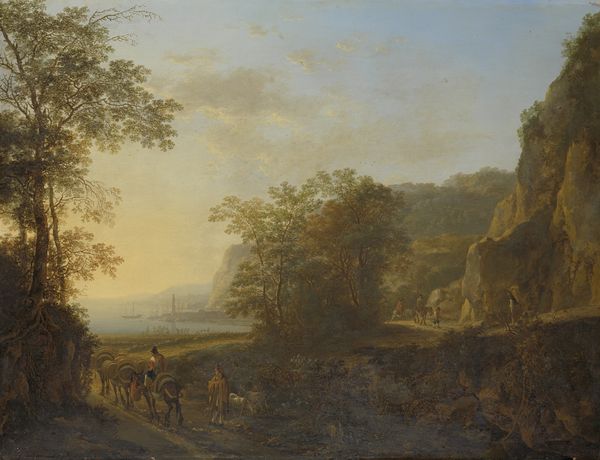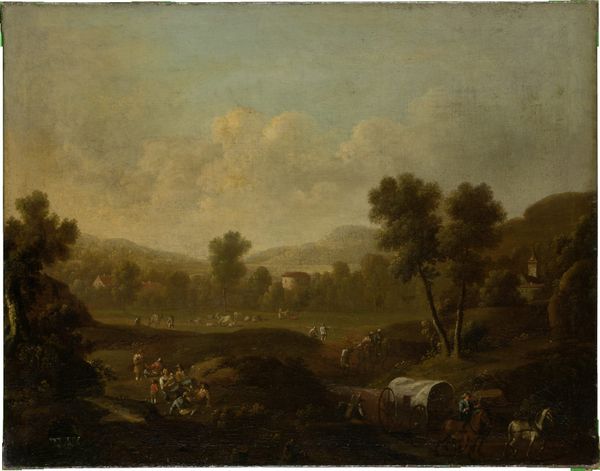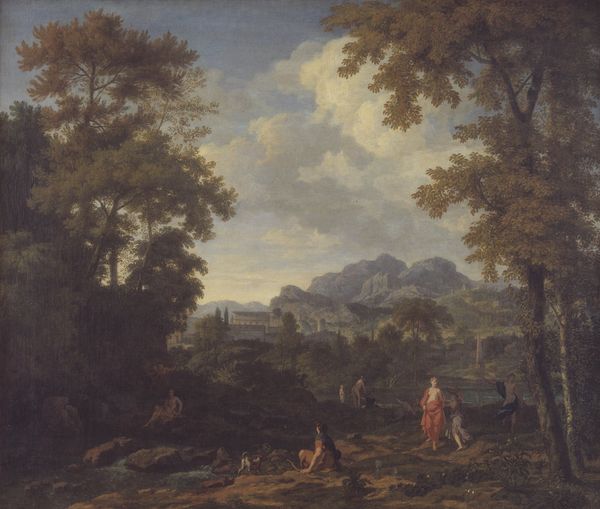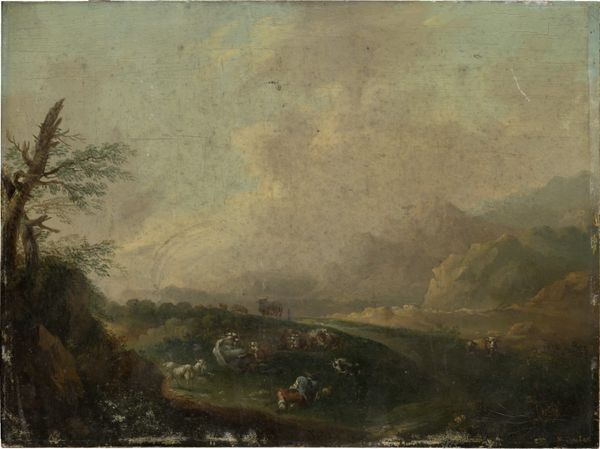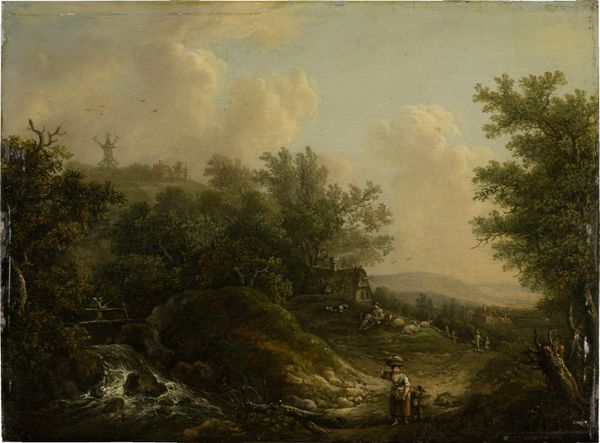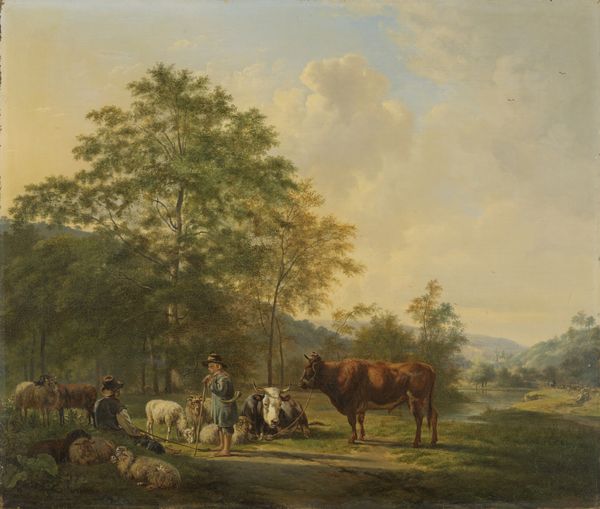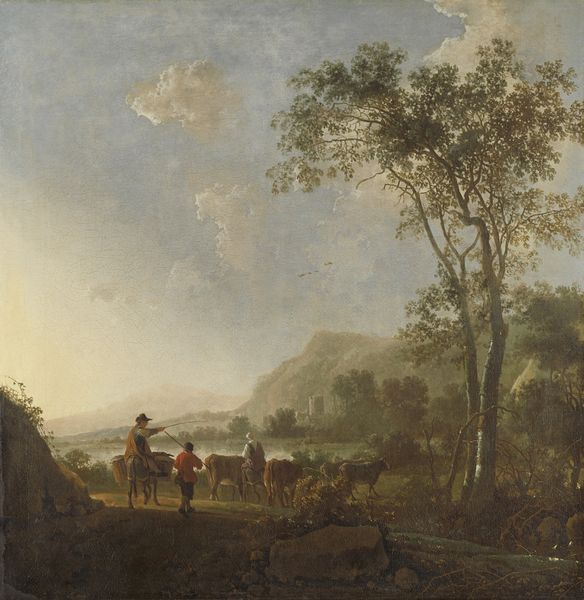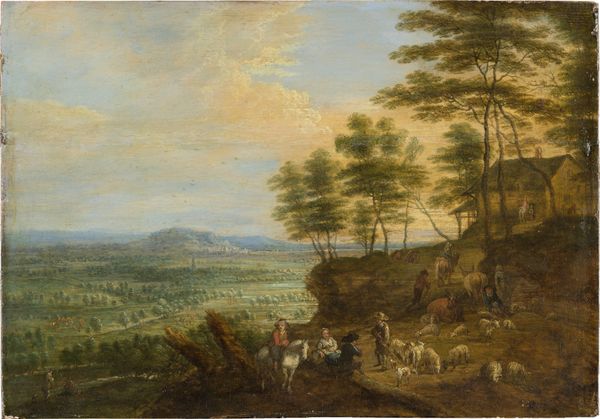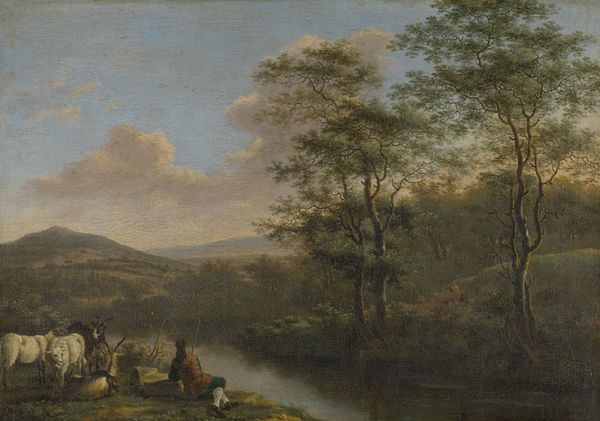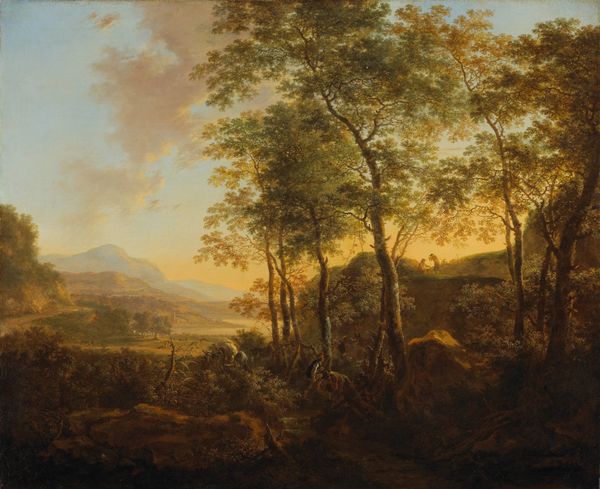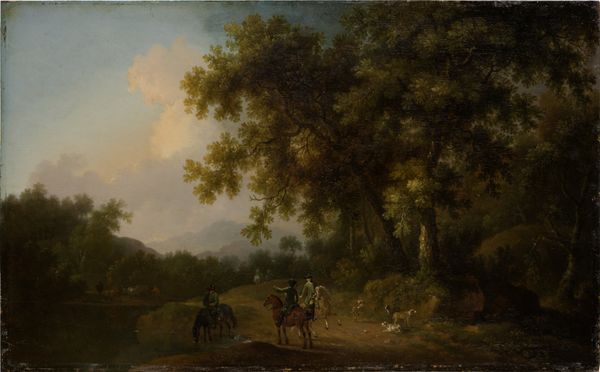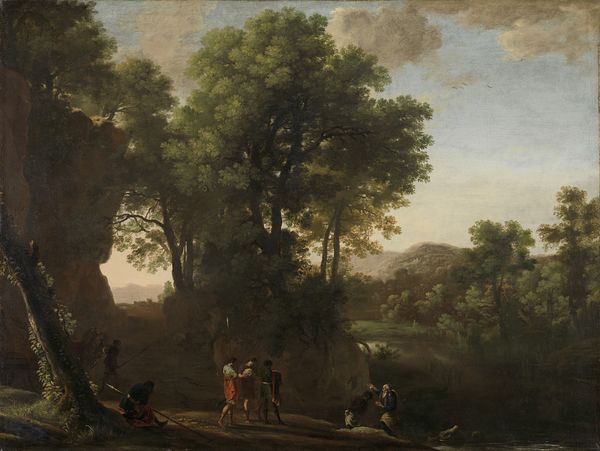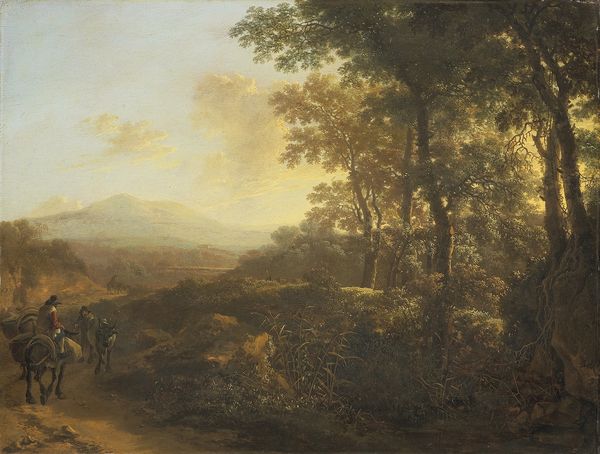
painting, oil-paint
#
baroque
#
dutch-golden-age
#
painting
#
oil-paint
#
landscape
#
oil painting
#
genre-painting
#
realism
Dimensions: height 148 cm, width 200 cm, depth 10.8 cm
Copyright: Rijks Museum: Open Domain
Editor: Here we have "Plundering," an oil painting attributed to Abraham Jansz. Begeyn, dating roughly from 1650 to 1697. The composition feels almost staged, with this idyllic landscape disrupted by figures that seem engaged in… well, something less than idyllic. How do you interpret this work, seeing it through a different lens? Curator: Let’s consider the materiality. Begeyn utilizes oil paint – a relatively accessible medium at the time for professional artists. But look closer. Are those really just farmers or merchants? And what's the social context? Consider the Dutch Golden Age, a period of unprecedented trade and expansion. Isn't it ironic to see these supposed rural laborers mirrored in a Baroque, near realistic painting of landscape, where we ignore that someone is making this and we, today, are consuming this? What labor, what materials were needed, and where does this scene fall within trade and expansion of resources? Editor: I hadn't really considered the implications of oil paint being 'accessible', it felt like it was the only medium at the time. Curator: Accessible, yes, relatively so. However, think about the pigment sources and their production! Where did the pigments come from? How were they processed? Whose labor was involved in producing the materials that ultimately became this picturesque scene? The “plundering” isn't just what's happening in the foreground; it's woven into the entire process of creation. Editor: So you're saying the plundering could be more than what the image explicitly illustrates? The creation and material components are being plundered. It kind of undermines the "realism." Curator: Precisely. It's about revealing the systems of production and consumption embedded in art. This piece, at first glance seemingly straightforward, prompts us to consider the exploitation of labor and resources required for artistic creation. Editor: This gives me so much to think about in terms of today's modern materials that get so easily exploited for a pretty landscape, so thanks! Curator: It’s a powerful reminder that even the most beautiful works can carry the weight of historical and social realities. I think it encourages a critical way to look at all mediums from art to furniture and the spaces around them.
Comments
No comments
Be the first to comment and join the conversation on the ultimate creative platform.

